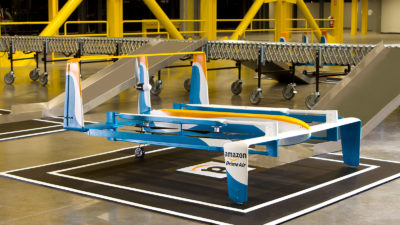Tethers demonstrate propellantless propulsion in low-Earth orbit
By Sven G. Bilén|December 2020
The Space Tethers Technical Committee focuses on the development and use of tether-based technology for space systems.
The Tether Electrodynamic Propulsion CubeSat Experiment, or TEPCE, a U.S. Naval Research Laboratory-built mission to investigate electrodynamic-tether propulsion, reentered the atmosphere in February. After launch and deployment in late 2019, the spacecraft divided into two 1.5-unit cubesats connected by a 1-kilometer-long conducting tether. When current flowed through the tether, it pushed against the Earth’s magnetic field to generate drag thrust, demonstrating propellant propulsion.
Washington-based Tethers Unlimited Inc. announced in January that it had demonstrated on-orbit operation of its Terminator Tape on
Prox-1, a 71-kilogram cubesat built by Georgia Tech with funding from the U.S. Air Force Research Laboratory’s University Nanosatellite Program. Launched into low-Earth orbit in June 2019 with tether deployed in September 2019, Prox-1 is deorbiting more than 24 times faster than before deploying the tether, according to observations from the U.S. Space Surveillance Network. The operations demonstrate that electrodynamic tethers are viable systems for end-of-life satellite disposal from low-Earth orbit. Several other satellites have been outfitted with Terminator Tape modules, including NPSat-1 built by the Naval Postgraduate School.
York University’s Deorbiting Spacecraft using Electrodynamic Tethers, or DESCENT, was integrated into Texas-based NanoRacks’ flight hardware in August for transportation to NASA’s Wallops Flight Facility in Virginia. DESCENT consists of two 1U cubesats that will separate, deploying a 100-meter bare electrodynamic tether, to determine its effectiveness as a deorbiting device.
In March, the European Commission-funded Electrodynamic Tether Technology for Passive Consumable-less Deorbit Kit, or E.T.PACK, project passed its first-year review. The project is led by University Carlos III of Madrid with partners from University of Padua, Dresden University of Technology, Fraunhofer Institute for Ceramic Technologies and Systems, Sener Aeroespacial and Advanced Thermal Devices. The project’s researchers are constructing prototype deorbit hardware for a future flight demonstration. Consisting of two separate modules, the deployment mechanism module and electron emitter module, these will be connected by a 500-meter-long tape tether made of segments with different functionalities. With a 12U-cubesat overall volume, the hardware is aimed at demonstrating accelerated propellantless deorbiting from low-Earth orbit with a bare-tape tether anode and different types of cathodes, including a low-work-function tether. The prototype system will be scalable to deorbiting satellites up to 1,000-kilograms mass and 1,200-kilometer altitude by using a longer tape tether. Other E.T.PACK milestones include the June testing of the hollow cathode at low mass flow rates; the July completion of the design of the deployer mechanism; and the September manufacturing of the first samples of low-work-function tether, completion of the second generation of the mission analysis software (BETsMA v2.0) and design of the full deorbit hardware.
In September, the University of Michigan’s 3U cubesat Miniature Tether Electrodynamics Experiment-1, or MiTEE-1, completed the last of its required tests and software verifications before delivery. MiTEE-1 is part of NASA’s Educational Launch of Nanosatellites program. For this mission, MiTEE-1 will not use a tether but instead will deploy a rigid 1-m boom to measure the electrodynamics of electron current collection to a pico-/femto-scale satellite endbody (satellite mass up to 200 grams) in the Earth’s ionosphere using a 200-volt variable-bias power supply. The cubesat also uses an electron beam filament source to emit electrons into the ionosphere that is characterized by a miniature Langmuir-probe instrument.


































